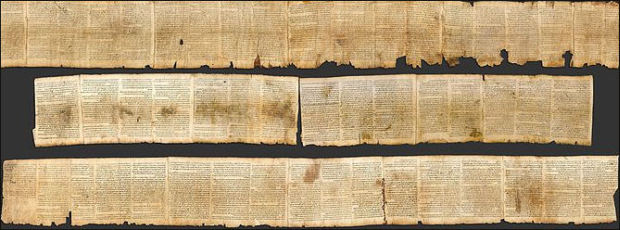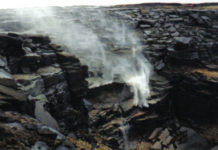Many of the ancient manuscripts undergo deterioration over a period of time and very few places have a particular climate which can help in the preservation of these priceless scripts of knowledge. One of those areas is near the Dead Sea. The northern shore of the Dead Sea is a particularly dry, arid place. It is 13 miles from Jerusalem, and even though the area is often shrouded in haze, the humidity levels are extremely low: it is the perfect place to preserve ancient artefacts.
A total of 981 ancient texts have been found near the area of Dead Sea giving them the name the Dead Sea Scrolls.
In the spring of 1947, two young Bedouin shepherds were looking for a lost goat among the cliffs in the area known as Qumran. As they hunted from cave to cave, they came upon a store of jars containing many papyrus and parchment manuscripts. These scrolls only came to prominence later that year when the Bedouin sold seven of the texts to a local antiquities dealer.
As the academic world grew to hear about the discoveries, intense excitement burst through the global community of historians. Little did they know that this would be the most important discovery of ancient scrolls in the entire century. In 1949, the exact location of the initial find was discovered, and the cave was given a thorough archaeological survey.
..the scrolls and the ruin both dated from between the third century BC and 68 AD, placing them around the time of Christ.
More fragments of scrolls were uncovered, along with pieces of cloth, pottery and wood. Over the next seven years, ten more caves containing ancient texts were found in the Qumran area, and the remains of around 850 different scrolls were discovered in total. The caves were named in the order that they were searched, and cave four, uncovered in 1952, proved the single biggest haul of artefacts with 15,000 fragments of 500 different manuscripts.
A complex of ancient structures close to the caves, referred to as the Qumran ruin, was also excavated. What the scientists discovered was that the scrolls and the ruin both dated from between the third century BC and 68 AD, placing them around the time of Christ. It seems the texts formed the library of a Jewish sect, similar to the Essenes.
The truly fascinating thing about the scrolls is not so much their history, but what they actually say.
The Essenes were a strict Torah-observing society, who disliked the established priesthood and may have actually been wiped out by the Jerusalem-based church. It is thought the ruins at Qumran formed part of their society, and the scrolls were hidden from the advancing Roman army around AD 70. The truly fascinating thing about the scrolls is not so much their history, but what they actually say.
The scrolls have been deciphered and reconstructed by expert modern scholars. They tend to fall into two groups: texts concerned with religion and others revealing details of daily lives and history. There are copies of many biblical writings and all but one book of the Old Testament.

More interestingly, there are previously unseen psalms authored by King David and Joshua, and also some prophecies attributed to Ezekiel, Jeremiah and Daniel that do not appear in the Bible. The scrolls contain previously unknown stories about Enoch, Abraham and Noah. Similarly, the lost words of Amram, Joseph, Judah, Levi and Naphtali are also revealed in the texts.
The most enigmatic information contained in the scrolls lists 64 places around Israel where ancient treasures are buried.
Surprisingly, given their date and proximity to New Testament events, the life of Jesus Christ is not mentioned. The scrolls are mainly written in Hebrew, but also feature passages in Aramaic and Greek. Some scrolls explain laws and codes of battle, whereas others recount poems and the philosophies of wise men. The most enigmatic information contained in the scrolls lists 64 places around Israel where ancient treasures are buried.
It is suggested that not only gold and silver is hidden there, but many of the holy objects from the temple of Jerusalem were also deposited in distant, unknown places for safe keeping. Although the scrolls were all discovered within eight years, the collection was scattered among universities, museums and scholarly institutions across the world.
In 1954, some of the scrolls were even advertised for sale in the Wall Street Journal.
Many of the scrolls were in terrible condition, so it became difficult to assemble a complete idea of what the texts revealed. During the 1960s and 70s, much of the work that was done remained unpublished, so public interest in the scrolls waned.
In the last decade, however, there has been a renewed commitment to provide complete collections of photographs, translations and explanations to the wider world. This seems vitally important. Not only do the scrolls represent an amazing historical discovery, they also chronicle a time essentially interwoven with our understanding of the Biblical World. In the future, many more such rare manuscripts could be discovered, till then, let us cherish what we have.
-end-




































